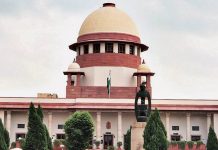This article has been written by Prasanth M, pursuing Diploma in Corporate Litigation ( FEB-01-2023 ) and has been edited by Oishika Banerji (Team Lawsikho).
It has been published by Rachit Garg.
Table of Contents
Introduction
When a company or LLP borrows a loan from the bank or financial institution and makes a default in repaying such loan then in such circumstances such bank or financial institution either itself or by joining with other creditors can initiate a corporate insolvency resolution process (CIRP) against the company or LLP in default. The same is the crux of Section 7 of the Insolvency and Bankruptcy Code, 2016 (IBC). When an application moved by a financial creditor i.e. the bank or financial institution is admitted by the NCLT in respect of a default, the CIRP is said to have been initiated. The implication of this is that the management of the defaulting company shifts from its directors to the insolvency professional who shall manage the affairs of the company and does all his duties as per the provisions of this Code.This article specifically highlights on Section 7(5)(a) of the IBC which grants the adjudicating authority discretionary power to admit an application of a financial creditor for initiation of CIRP.
An insight to Section 7(5) (a) of the Insolvency and Bankruptcy Code, 2016
Firstly, to constitute a default there should be a non payment of debt either wholly or any part therein and it becomes due and payable and the same is not paid by the corporate debtor I.e. the company or LLP.
Secondly , the application must satisfy the provision contained under Section 7(2) which talks about the form, manner, the fees and such they are prescribed under “the Insolvency and Bankruptcy (Application to Adjudicating Authority) Rules, 2016”
Lastly there should not be any disciplinary proceedings pending against the proposed Interim resolution professional with the Insolvency and bankruptcy board of India which is the regulatory authority of IP’s.
Supreme Courts’ judgement interpreting Section 7(5)(a) of IBC 2016
The Adjudicating Authority has the discretion to admit or reject a CIRP application submitted under Section 7 of the Insolvency and Bankruptcy Code, 2016 when examining the existence of debt and default by a corporate debtor, according to a recent ruling by the Supreme Court on July 12, 2022 in the case of Vidarbha Industries Power Ltd vs. Axis Bank Limited (2022). The admission of claims made by a financial creditor is addressed in Section 7(5) of the Code, whereas the admission of claims filed by an operational creditor is addressed in Section 9(5). Alongside this judgement there are a few more where interpretation of the provision has grabbed eyeballs. The same has been discussed hereunder.
Vidarbha Industries Power Ltd vs. Axis Bank Limited (2022)
Facts of the case
Vidarbha Industries is a Power Generation Company Registered with the Maharashtra Electricity Regulatory Commission. Axis BanK Ltd filed an application under Section 7(2) of the IBC before the NCLT, Mumbai for Initiating CIRP.
Vidarbha Industries filed an application before the NCLT, Mumbai to stay the proceedings under Section 7 of the Code taking a stand that the financial debt owed by Vidarbha Industries to Axis BanK Ltd was Rs. 700/-crores, whereas Vidarbha industries by virtue of an order from the Appellate Tribunal for Electricity was entitled to a sum of Rs.1730 Crores and the appeal on the said order was pending before the Supreme Court of India.
Both NCLT, Mumbai and the NCLAT dismissed the applications to stay the proceeding under Section 7(5)(a) taking only into consideration the fact that there was a financial debt and the presence of a default. However, an appeal was filed by Vidarbha Industries before the Supreme Court of India against the order of NCLAT.
Issue of the case
The issue before the Supreme Court was whether the provisions of Section 7(5)(a) is discretionary or mandatory in nature.
Judgement and analysis

The Supreme Court observed that the legislature has in its own wisdom, chosen to use the expression “may” in Section 7(5)(A) of the Code and if the NCLT is satisfied that a default has occurred and the application made by the financial creditor is complete and also there is no disciplinary proceedings pending against the proposed Interim Resolution Professional, then the NCLT “may ” admit the application.
The Supreme Court further observed that the Section 9(5) which refers to the application made by the operational creditor is mandatory in nature. However in case of an application filed by a financial creditor under Section 7(5)(a) then the NCLT has to examine the expediency of initiation of CIRP, taking into account all relevant facts and circumstances including the overall overall financial stability and viability of the corporate debtor.
The Supreme Court had noted that both NCLT and NCLAT fell in error in holding that once it was found that a debt existed, and the corporate debtor was in default payment of the debt there would be no option to the NCLT but to admit the petition under Section 7 of the Code. The Supreme Court also stated that both NCLT and NCLAT have brushed aside the case to the appellant, that an amount of Rupees 1,730 crores was realisable.
The Supreme Court also observed that the objective of IBC is not to penalise the solvent companies for temporary default by initiating CIRP. It was further observed that adjudicating authority shall not use the discretionary power under Section 7(5)(a) of IBC arbitrarily or capriciously.
The decision of the Apex court has paved ways for various defences by the corporate debtor particularly when there is a pending litigation and in which the outcome of the order or award will nullify the default of the corporate debtor under which the CIRP is intended to be initiated.
K. Paramasivam vs. The Karur Vysya Bank Ltd & Anr (2022)
This is yet another case in which the Supreme Court attempted to provide better clarification on understanding the provision of Section 7 of IBC.
Facts of the case
The brief facts of this case is that the Karur Vysya Bank Ltd advanced credit to (i) Sri Maharaja Refineries, a Partnership Firm; (ii) Sri Maharaja Industries, a proprietary concern of K. Paramasivam; and (iii) Sri Maharaja Enterprises, a proprietary concern of P. Sathiyamoorthy and all of the aforementioned credit is guaranteed by Maharaja Theme Parks and Resorts Pvt. Ltd. The ground for the appeal was that the Maharaja Theme Parks and Resorts Pvt. Ltd iwa not the corporate debtor within the ambit as defined under Section 3(8) of IBC nor is he a guarantor as defined under Section 5(5A) of IBC.
Issue of the case
The issue here was whether a financial creditor can initiate a CIRP process against the guarantor without taking action against the principal borrower. In other words whether the liability of the guarantor is co-extensive with that of the principal borrower.
Judgement of the case
The Supreme Court relied on the well settled three bench judgement of Laxmi Pat Surana vs. Union Bank of India and Another (2020) wherein it was held that the CIRP can be initiated against the personal guarantor even without proceeding against the Corporate debtor and such the liability of the guarantor is jointly and severally as of the corporate debtor.
E S Krishnamurthy and others v. M/s Bharathi Tech Builders (2021)
Facts of the case
The brief facts of this case was that the M/s Bharath Hi Tech Builders was engaged in the business of construction of real estate projects which promised to build and register plots to the allotted within a stipulated time failing which the allottees are entitled to be refunded with the entire amount with interest. The builder failed to honour the obligation and therefore the allotted moved an application under Section 7 of IBC. The builder took a stand that the settlement is in process with the allottees.
Issue of the case
The underlying issue before the Supreme Court in this present case is whether the adjudicating authority can dismiss the petition filed under Section 7 of IBC on the ground that the parties were attempting to settle the issue out of Court.
Judgement of the case
NCLT in this case had provided the parties a timeframe of 3 months to solve the dispute as the settlement was undergoing and if otherwise, parties were allowed to file an appeal and dismiss the petition filed under Section 7 of IBC. The petitioner appealed against the order of the NCLT with the NCLAT which upheld the decision. The Supreme Court gave literal interpretation to the provision of Section 7(5) of IBC and observed that the NCLT or NCLAT may or may not admit the petition, however there is no statute to refer the parties to settle out of court.
Conclusion
As we have seen in the discussed cases, the Supreme Court in its various judgments from time to time has interpreted Section 7(5)(a) and it is now a well settled piece of legislation. The objective of CIRP is not money recovery but to aid the corporate debtor to revive his sinking business and thereby the stakeholders and public at large are not affected.
Students of Lawsikho courses regularly produce writing assignments and work on practical exercises as a part of their coursework and develop themselves in real-life practical skills.
LawSikho has created a telegram group for exchanging legal knowledge, referrals, and various opportunities. You can click on this link and join:
Follow us on Instagram and subscribe to our YouTube channel for more amazing legal content.










